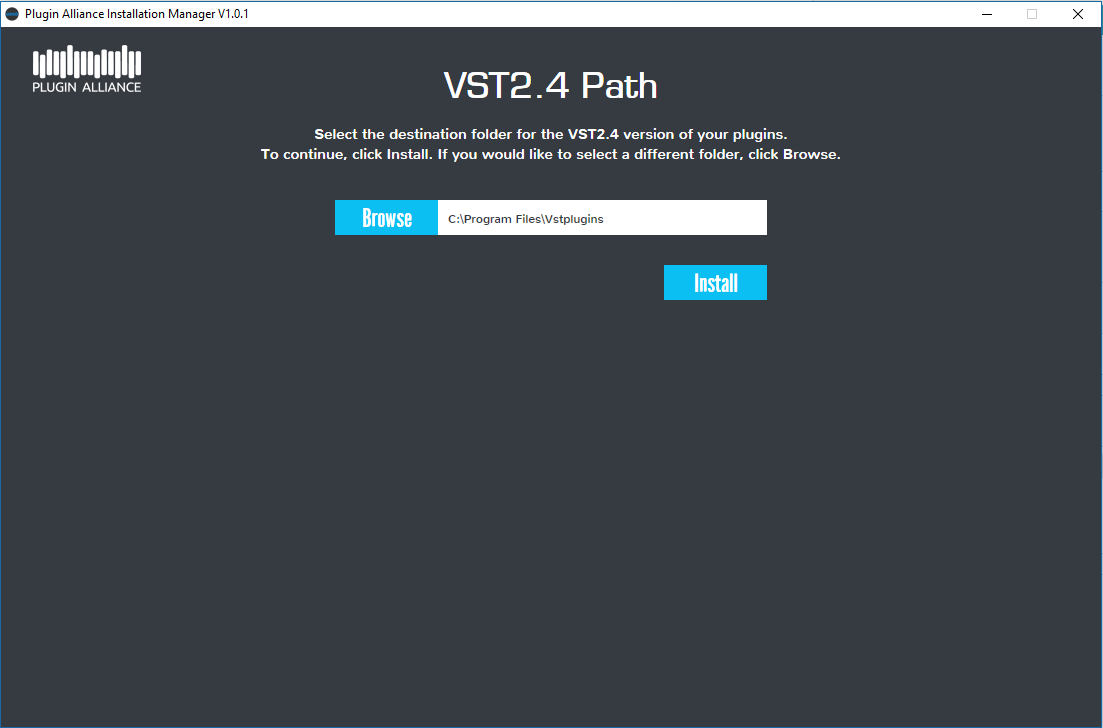Destination Folder For Vst Plugins
- Destination Folder For Vst Plugins Downloads
- How To Find Vst Folder
- Destination Folder For Vst Plugins Free
- Destination Folder For Vst Plugins Download
- No Vst Plugins Folder
- I Can't Find Vst Plugins Folder
- How To Run Vst Plugin
As shown some time ago for the Mac, today’s tip shows you how to organize your plug-ins on windows, in order to find and load them quickly into Blue Cat’s PatchWork or MB-7 Mixer.
Note: only add discrete folders which contain VST plug-ins. Adding entire drives or system folders may crash Live. Make sure that the folder contains only VST.dll files. Other system files can use the.dll extension too, but they may crash Live if included in the VST folder. Live scans all available plug-ins and once completed they will.
As you will see, It’s no rocket science, and this will greatly improve your experience and reduce the time to load your plug-ins.

Spending Too Much Time Looking For Plug-Ins?
Some people have been asking for the capability to load the plug-ins directly from the menu instead of having to open an Explorer Window. While this may be added in the future to our software, be aware that it may never beat what you can already do today with the Windows Explorer or Finder, as you will see below…
How to Install VST / AU Plugins (Instruments & Effects) Install the plugin - We strongly recommend you run the plugin's installer and use its default install location OR for VST/AU plugins without an installer, copy the files to the appropriate folder set in the Plugin Manager Plugin search paths field. How to Install VST / AU Plugins (Instruments & Effects) Install the plugin - We strongly recommend you run the plugin's installer and use its default install location OR for VST/AU plugins without an installer, copy the files to the appropriate folder set in the Plugin Manager Plugin. So first confirm you have installed the 64 bit or 32 bit version of the plugin into the C:Program FilesVstplugins folder or in the C:Program Files (x86)VstPlugins folder. Now, IF the VST manufacturer does not have a 64 bit version you will need to run the Studio One 32 bit version to use that plugin. Click the Browse button to the right of 'VST2 Plug-In Custom Folder' and 'VST3 Plug-In Custom Folder.' Choose your folder for both VST2 and VST3. Click 'Rescan' if necessary, to scan your folder and find your VST plugins. We recommend to set a folder like 'NI Content' on an separate drive with enough available space as your content location. VST location (32-bit) Windows only: Here you can define where your 32-bit VST-plug-ins are installed. Please watch this video to learn how to manage VST.
How To
Free tape echo vst 64bit. On Windows, whatever you do, your VST plug-ins folder will probably quickly look like a huge mess, unfortunately…

Destination Folder For Vst Plugins Downloads
There is however a very simple way to overcome this issue and organize your plug-ins properly: it will just take you a few minutes!
How To Find Vst Folder
To quickly access your plug-ins, without modifying the original install locations (for optimal compatibility), just do the following:
1. Create a new folder somewhere convenient on your system. For example in the ” My Documents” directory.
2. Label the new folder as “Plug-ins”.
3. Drag it into your Sidebar Favorites section to make it available as a shortcut there.
4. Go to your VST plug-ins folder.
5. Right click on each plugin you want and choose “Create shortcut” (multi-selection works too).
6. Move these shortcuts to your new folder, and create sub-folders to organize them.
Here you go! You can now access plug-ins quickly using the shortcuts, inside the appropriate folders:
VST Plug-Ins organized into subfolders, directly accessible from the Favorites Sidebar
Additional Tip: You can also choose to add several folders to the favorite bar instead of a single one, to access directly the mostly used plug-ins that you use most of the time.
One More Tip: It is possible to add a shortcut to the same plug-in in different folders, as it may be valid for several categories.
Not Fancy Enough? Add Some Icons!
Once you have properly organized the plug-ins thanks to shortcuts and linked to them from the favorites bar, you may want to add some colors to it and change the icons. You can set a different icon for each folder, and even for each plug-in:
Destination Folder For Vst Plugins Free
Plug-Ins Folders with Custom Icons
With custom icons, it is even easier to find the plug-ins: a glance will suffice to pickup the right one!
Destination Folder For Vst Plugins Download
Free Search Included!
And one more thing… Did you know that you can then use the standard windows search feature to find the plug-ins? Just type in a name and you’ll get it instantly!
VST Plug-In Search Included !
No Vst Plugins Folder
Conclusion
I Can't Find Vst Plugins Folder
Simply using the Windows Explorer properly and taking the time to organize things will greatly improve the plug-in loading experience. There are even features that are not available in most host applications (how many do provide custom icons and search?).
How To Run Vst Plugin
Do you still need an included plug-in menu? Please discuss below!